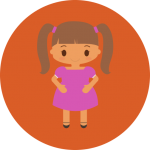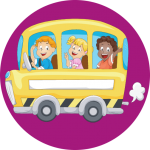Music is an essential part of our lives, and it holds a special place in early childhood development. It is more than just a source of entertainment; it is a powerful tool that can influence a child’s growth in multiple ways. From enhancing cognitive abilities to nurturing emotional health, music plays a pivotal role in shaping the minds and hearts of young children.
Enhances Cognitive Skills
When children listen to music, they are exposed to various sounds and rhythms that stimulate their brain. This exposure can enhance their ability to process sounds, which is crucial for developing language and literacy skills. Studies show that children who engage with music frequently tend to have better memory and are more adept at solving problems. Furthermore, musical activities such as singing songs with repetitive lyrics or learning to play simple instruments can reinforce pattern recognition, a key component in mathematical thinking.
In addition, the nuances of melody and harmony help children in distinguishing between different tones, which supports phonetic awareness. The use of music in storytelling or educational content also aids in retaining information, making learning a more engaging and memorable experience. Therefore, integrating music into daily routines provides children with a rich auditory environment that fuels their intellectual growth.
Boosts Emotional Well-being
Music has the ability to evoke a wide range of emotions. For young children, it can be a means of expressing feelings they might not yet have the words for. Singing or listening to music can help children relax, reduce anxiety, and improve their mood, leading to a more positive daycare experience. Moreover, music therapy is often used to help children with emotional regulation, teaching them to identify and express their emotions in healthy ways.
In a group setting, music can create a sense of community and belonging, helping children to feel more connected to their peers. Lullabies and soothing music can comfort children, easing transitions and helping them settle during nap times. By fostering an emotional connection to music, children learn to use it as a tool for self-soothing and emotional expression throughout their lives.

Fosters Social Interaction
Group activities involving music, such as singing or playing instruments, encourage children to interact with their peers. This interaction fosters teamwork and helps children develop important social skills such as sharing, taking turns, and listening to others. Music circles or ensemble play teach children to work together harmoniously, promoting empathy and understanding as they create music collectively.
Participating in musical activities also introduces children to the concept of leadership and following directions, as they often take turns leading songs or following a conductor. These experiences can enhance communication skills and build confidence in social settings. As they collaborate in creating music, children learn the value of cooperation and the joy of achieving a common goal, which are essential skills for future social interactions.
Movement: More Than Just Play
Movement is a natural and vital part of a child’s development. It goes beyond mere physical activity and touches on various aspects of growth, including mental and emotional development. By encouraging movement, caregivers can support children in exploring their environment and understanding their body’s capabilities.
Physical Benefits
The benefits of movement are perhaps most apparent in the physical development of children. Activities like dancing, jumping, and running help improve coordination, balance, and motor skills. Regular physical activity also contributes to building strong bones and muscles, which are essential for a healthy lifestyle. Beyond these, movement activities enhance cardiovascular health and boost energy levels, ensuring that children stay fit and active.
Engaging in diverse physical activities also helps children develop spatial awareness and body control. Through dance and active play, they learn to navigate their surroundings, which supports their ability to perform everyday tasks with ease. As they grow, these physical competencies become the foundation for participating in sports and other recreational activities, promoting a lifelong commitment to health and fitness.
Cognitive Development
Movement activities often require children to think, remember, and make decisions, which aids in cognitive development. For example, when children learn a dance routine, they must remember the steps and sequences, enhancing their memory and concentration. Such activities also stimulate problem-solving skills as children navigate obstacles or create new moves in dance.
Incorporating movement with learning, such as acting out stories or using gestures to understand concepts, can reinforce understanding and retention. These kinesthetic learning opportunities cater to different learning styles, making information accessible to all children. By linking physical movement with cognitive tasks, caregivers can create a dynamic learning environment that fosters academic growth alongside physical development.
Emotional and Social Growth
Participating in movement activities can also boost children’s self-esteem and confidence. Successfully completing a physical task or mastering a new skill provides a sense of accomplishment. Additionally, engaging in group movement activities promotes social skills as children learn to cooperate and communicate with each other. These shared experiences can help forge friendships and build a sense of community among peers.
Through movement, children also learn to manage their emotions, using physical activity as an outlet for stress or frustration. Group activities, such as team sports or dance classes, teach children about sportsmanship and resilience, as they navigate wins and losses. The confidence gained from mastering physical skills can translate into other areas of their lives, encouraging them to tackle new challenges with enthusiasm and determination.

Integrating Music and Movement in Daycare
Combining music and movement activities in daycare can create a dynamic and engaging environment that supports holistic child development. By thoughtfully integrating these elements into daily routines, caregivers can enhance the learning experience and cater to the diverse needs of children.
Daily Routines and Structured Activities
Daycare providers can incorporate music and movement into daily routines in a variety of ways. For instance, starting the day with a music and movement circle can energize children and prepare them for learning. Structured activities like guided dance sessions or musical games provide children with opportunities to explore and express themselves creatively. These activities can be aligned with educational themes, reinforcing concepts through music and movement.
Incorporating transitions with music, such as clean-up songs or rhythmic cues, can help children move smoothly between activities. By using music as a signal, children learn to associate certain tunes with specific actions, supporting routine and behavior management. Structured musical activities also foster discipline and perseverance, as children practice and refine their skills over time.
Unstructured Play
Unstructured play is equally important as it allows children to explore their interests and creativity. Providing a space where children can freely dance or experiment with musical instruments encourages self-expression and autonomy. This freedom to explore without constraints fosters innovation and problem-solving skills, as children create their own rules and narratives in play.
Unstructured musical play can lead to spontaneous collaborations and improvisations, further enhancing social skills and creativity. By observing children during this play, caregivers can gain insights into their interests and personalities, allowing them to tailor future activities to better meet individual needs. This balance of structured and unstructured activities ensures a well-rounded approach to development, offering children both guidance and freedom.
Cultural Exposure
Music and movement activities can also serve as a gateway to introduce children to different cultures. Exploring music and dance from various parts of the world broadens their understanding and appreciation of cultural diversity, fostering empathy and inclusivity. By celebrating cultural events and traditions through music and dance, children develop a global perspective and learn to respect and value differences.
Incorporating multicultural music and dance can also enhance language learning, as children are exposed to songs and stories in different languages. These experiences enrich their vocabulary and comprehension, supporting bilingual or multilingual development. By integrating cultural education into music and movement activities, caregivers can cultivate a rich and inclusive environment that celebrates diversity.
The Role of Daycare Providers
Daycare providers play a crucial role in facilitating music and movement activities. Their enthusiasm and participation can greatly enhance the children’s experience and learning outcomes. As mentors and guides, they have the opportunity to inspire a lifelong love for music and movement in the children they care for.
Creating a Supportive Environment
Providers should create a welcoming and inclusive environment where children feel safe to express themselves. This includes offering a variety of musical instruments and ample space for movement. A thoughtfully designed environment with accessible resources encourages exploration and participation, fostering a love for music and movement.
In addition to physical resources, a supportive environment also includes emotional support and encouragement. Providers should acknowledge each child’s efforts and progress, creating a positive and nurturing atmosphere. By celebrating individual achievements and encouraging peer support, caregivers can build a community where every child feels valued and motivated.
Encouragement and Participation
Encouraging children to participate in music and movement activities requires patience and enthusiasm from providers. Being actively involved in these activities not only models positive behavior but also builds stronger relationships with the children. Caregivers who participate with joy and enthusiasm inspire children to engage fully and embrace new experiences.
Providers can also personalize encouragement by recognizing each child’s unique strengths and interests. By offering choices and adapting activities to suit individual preferences, they empower children to take ownership of their learning. This personalized approach fosters a sense of agency and confidence, encouraging children to explore and develop their talents.
Continuous Learning and Adaptation
Finally, daycare providers should be open to learning and adapting new methods of incorporating music and movement. Attending workshops and seeking professional development opportunities can provide fresh ideas and approaches to enhance their curriculum. By staying informed about new research and trends in early childhood education, providers can ensure they are offering the most effective and engaging experiences for children.
Collaborating with other educators and sharing best practices can also enrich a provider’s toolkit, offering diverse perspectives and strategies. By fostering a culture of continuous learning and innovation, daycare settings can remain dynamic and responsive to the evolving needs of children. This commitment to growth not only benefits the children but also enriches the professional journey of caregivers.
Conclusion
The integration of music and movement in daycare settings is not merely an extracurricular activity; it’s a fundamental component of early childhood education. The benefits of these activities extend beyond the daycare years, laying a strong foundation for lifelong learning and development. By understanding and implementing these practices, daycare providers can significantly contribute to the holistic growth of the children in their care.
Incorporating music and movement into your daycare can transform the way children learn and grow. By providing a nurturing environment that encourages these activities, you’re not just supporting their development—you’re helping them build the skills and confidence they need to thrive in the future. As we continue to explore and embrace innovative educational approaches, music and movement remain timeless tools in nurturing the next generation of learners and leaders.
Contact Discovery Time Learning Center
Are you ready to enhance your child’s learning experience through music and movement? At Discovery Time Learning Center, we are dedicated to providing a nurturing environment that fosters creativity, social skills, and cultural appreciation.
Get in touch with us today! Whether you have questions about our programs or want to learn more about how we can support your child’s development, we are here to help.
Join us in creating a vibrant learning community where every child can thrive!



